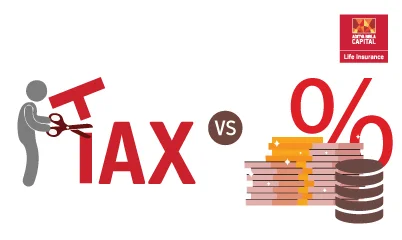What is the Goods and Services Tax (GST)?


Get Guaranteed Returns After a Month^
Unlock the Power of Smart Investment!


-
 Table of Contents
Table of Contents- How Does GST work?
- Tax Laws before the Implementation of GST
- Types of GST
- Who is Eligible for GST Registration?
- GST Registration
- Know the GSTIN - GST Identification Number
- GST Certificate
- GST Returns
- Rates of GST
- How to Calculate GST?
- What is a GST Payment?
- E-way Bill for GST
- Advantages of GST
- GST Council
- GSTN - Goods and Service Tax Network
- Helpline for GST
- GST App
How Does GST Work?
Tax Laws before the Implementation of GST
Types of GST
GST tax is classified into four categories, which are listed below:
Who is Eligible for GST Registration?
GST Registration
Regular, casual taxable people, non-resident taxable persons, and e-commerce businesses are all eligible for GST registration. Regardless of revenue, simple taxable individuals, non-resident taxable persons, and e-commerce businesses must get GST registration.
As a result, any foreign person, foreign corporation, or foreign organisation selling products or services to India would be considered a non-resident taxable person, subject to all Indian GST requirements.
Know the GSTIN - GST Identification Number
GST Certificate
GST Returns
Rates of GST
How to Calculate GST?
What is a GST Payment?
E-way Bill for GST
Advantages of GST
The GST eliminates this cascading effect since the tax directly impacts the cost of goods and services. The tax burden is moved to the customer, which helps the sector via improved cash flow and working capital management.
GST Council
GSTN - Goods and Service Tax Network
Helpline for GST
GST App
Frequently Asked Questions
- PAN number
- Evidence of business registration
- Identity verification
- Those in charge's photographs and proof of residence
- Proof of business address
- Account statements
About Author
ABSLI DigiShield Plan
for Salaried Individuals¹
-
Disclaimer
ABSLI Salaried Term Plan (UIN:109N141V01) is a non-linked non-participating individual pure risk premium life insurance plan; upon Policyholder’s selection of Plan Option 2 (Life Cover with ROP) this product shall be a non-linked non-participating individual savings life insurance plan.
1LI Age 21, Male, Non Smoker, Option 1: Life Cover, PPT: Regular Pay, SA: ₹ 1 Cr., PT: 10 years, Premium paying term: 10 years, Annual Premium: ₹ 5900/- ( which is ₹ 491.66/month) Premium exclusive of GST. On death, 1 Cr SA is paid and the policy terminates.
Tax benefits are subject to changes in tax laws. Kindly consult your financial advisor for more details.
ABSLI DigiShield Plan is a non-linked non-participating individual pure risk premium life insurance plan; upon Policyholder’s selection of Plan Option 9 (Level Cover with Survival Benefit) and Plan Option 10 (Return of Premium [ROP]) this product shall be a non-linked non-participating individual life savings insurance plan. UIN: 109N108V10
ADV/6/23-24/548
Subscribe to our Newsletter
Get the latest product updates, company news, and special offers delivered right to your inbox
Thank you for Subscribing
Stay connected for tips on insurance and investments

 Home Loans
Home Loans
 Personal
Loans
Personal
Loans
 SME Loans
SME Loans
 Business Loans - Udyog
Plus
Business Loans - Udyog
Plus
 Loan against Securities
Loan against Securities
 Mutual Funds
Mutual Funds
 Stock and
Securities
Stock and
Securities
 Portfolio
Management Services
Portfolio
Management Services
 Pension Funds
Pension Funds
 Life
Insurance
Life
Insurance
 Health
Insurance
Health
Insurance
 Wellness
Solutions
Wellness
Solutions
 Pay Bills
Pay Bills
 Pay anyone
Pay anyone
 Pay on call
Pay on call
 Payment
Lounge
Payment
Lounge
 ABC Credit
Cards
ABC Credit
Cards

 1800-270-7000
1800-270-7000









